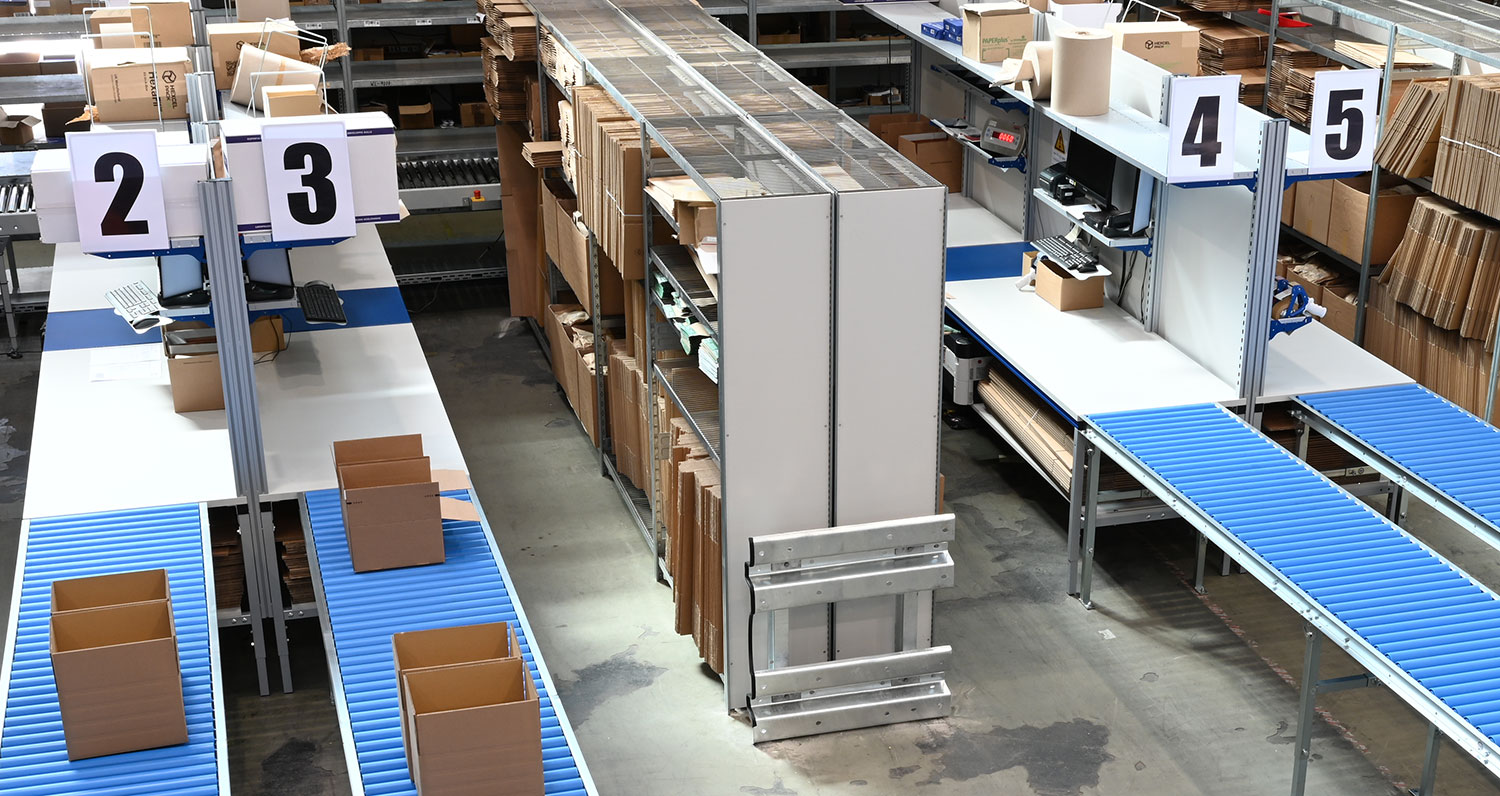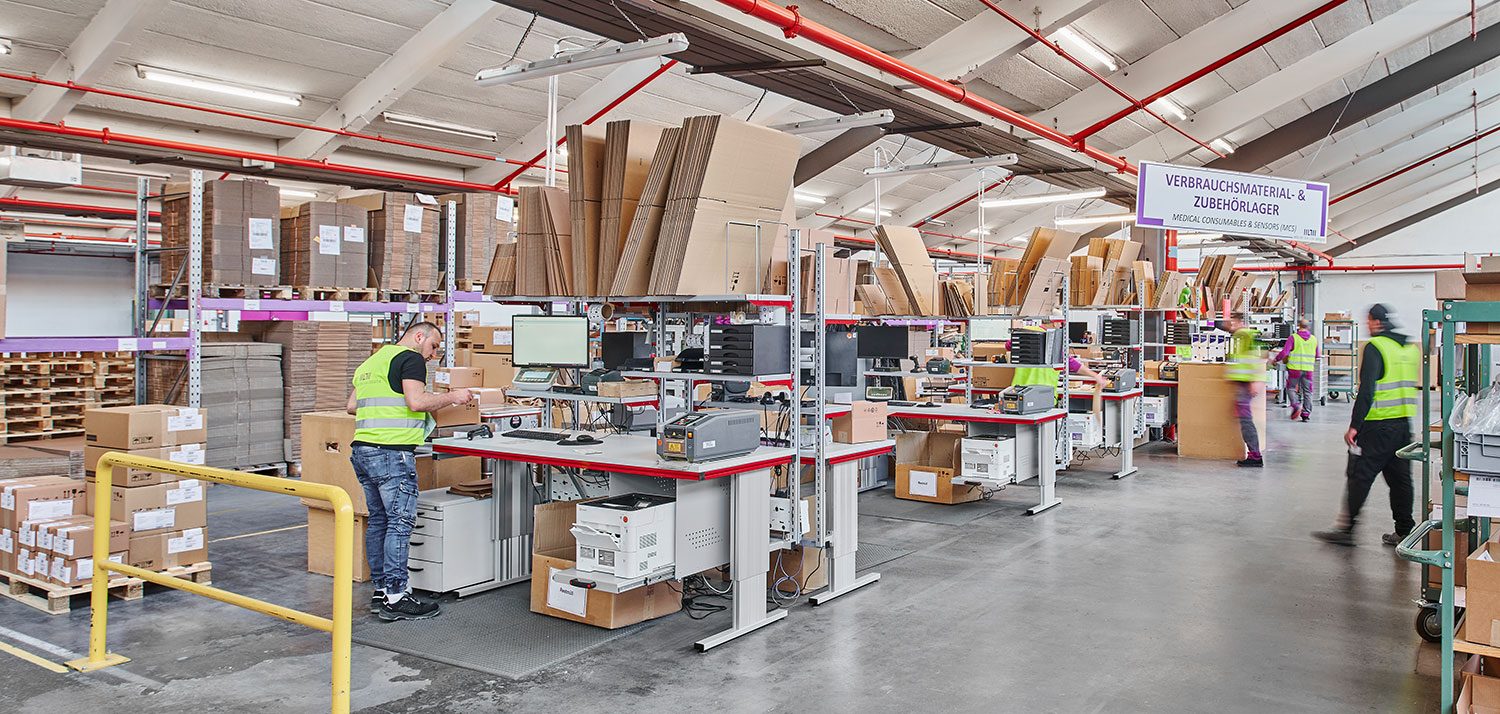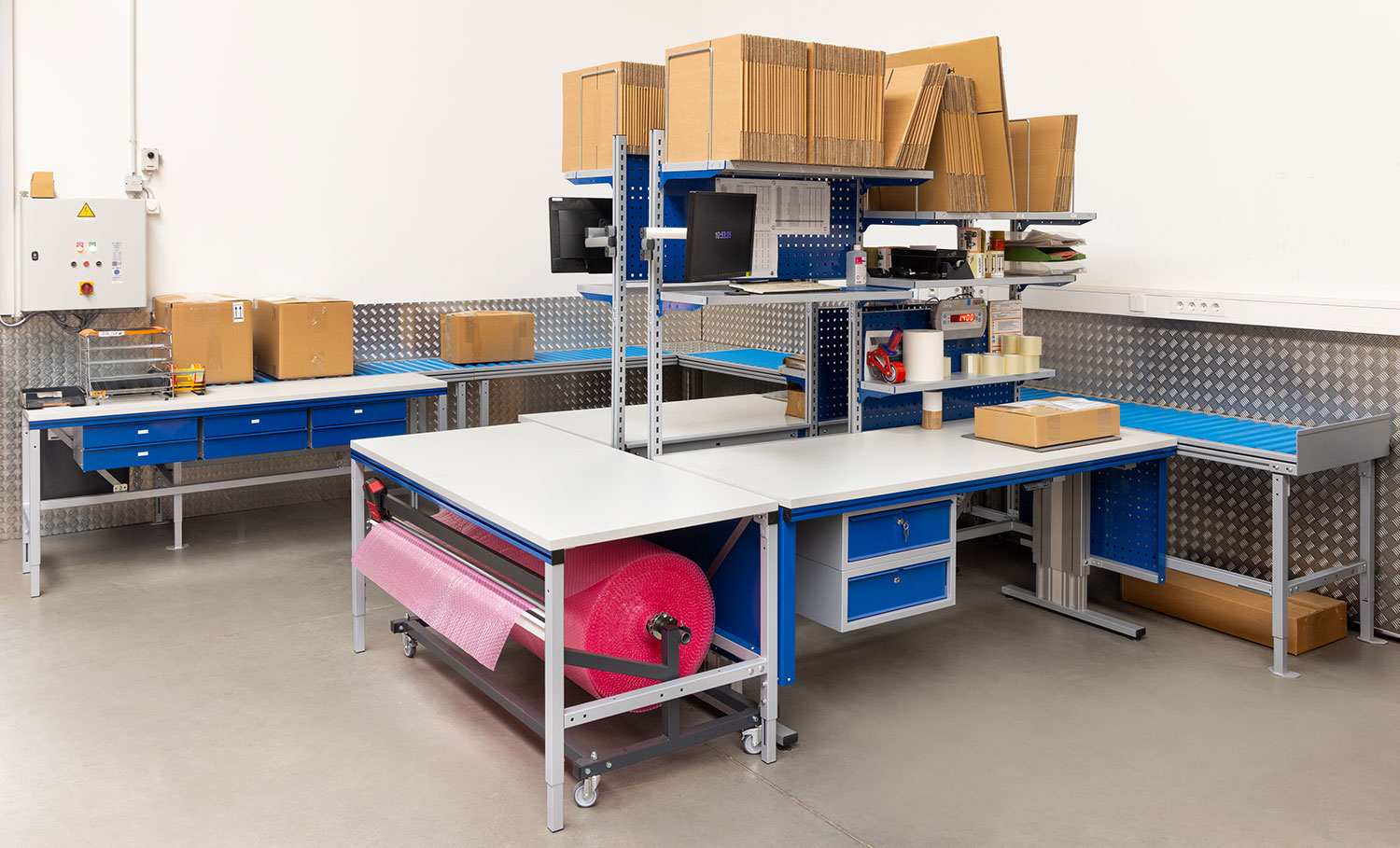
Healthy workplace design for modern companies
Info
- Healthy workplace design increases productivity and well-being
- Ergonomics, technology and organisation are key pillars
- Legal requirements and standards form the basis
- Customised solutions from Rocholz for various industries
- Digitalisation and assistance systems are shaping the future of work
Companies are faced with the challenge of designing workplaces that meet the needs of an ageing workforce and digitalisation. The flow of materials and information in companies is changing as a result of automation and new technologies.
At the same time, expectations regarding comfort, efficiency and flexibility are rising. The design of the working environment influences job satisfaction, productivity and the attractiveness of a company as an employer. Investing in a healthy workplace design lays the foundation for sustainable performance and ensures the competitiveness of your business.
Fundamentals and objectives of healthy workplace design
A healthy workplace design aims to reduce stress for employees, increase safety and ensure work performance. The goal is to plan workplaces in such a way that they do not pose any health risks.
Legal regulations and standards such as DIN EN ISO 26800 and the Workplace Ordinance set out the framework conditions. They also define the co-determination rights of works councils and the obligation to inform the workforce.
Companies must ensure that workplaces are adapted to individual needs and regularly checked for risks. Compliance with these requirements is part of comprehensive occupational health management.
Overview:
- Legal requirements such as DIN EN ISO 26800 and the Workplace Ordinance create clear framework conditions.
- Workplaces must be regularly checked for risks and individual needs.
- A workplace health management programme supports compliance with and implementation of the objectives.
The three dimensions of modern workplace design
The design of a workspace encompasses ergonomic, organisational and technological aspects. Ergonomic measures relate to the adaptation of furniture, tools and work equipment to the physical dimensions and abilities of employees.
Organisational measures regulate working hours, breaks and task allocation. Technological solutions such as digital assistance systems and adaptive software systems support employees by simplifying processes and reducing sources of error. Only the interaction of these three dimensions creates a working environment that promotes both well-being and performance.
Key factors influencing healthy workplaces
The design of the workplace has a direct impact on health and performance. Factors such as lighting conditions, temperature, noise levels and air quality are crucial for concentration and well-being. Height-adjustable furniture and individually adaptable work equipment allow for changing postures.
In the area of production and logistics, short distances, a logical arrangement of work equipment and a smooth flow of materials are essential. The integration of aids such as lifting and carrying aids reduces physical strain.
The arrangement of displays and controls also follows ergonomic principles to prevent poor posture and strain. Small adjustments to lighting, air and furniture have a noticeable effect on health and performance in the workplace.
Note: Keeping an eye on the key influencing factors ensures a permanently healthy working environment.
Healthy workplace solutions from Rocholz
Rocholz relies on modular systems that can be flexibly adapted to different requirements. Ergonomic packing table systems, cutting systems and wrapping paper dispensers are designed so that they can be adjusted to suit body size and activity.
Customised special designs are created in close collaboration with customers and take industry-specific requirements into account. Digital assistance systems integrated into workplace solutions support employees in carrying out complex workflows and ensure process reliability.
The path to a healthy workplace: step-by-step guide
The analysis of existing workplaces forms the starting point for any optimisation. Health risks are identified and assessed with the help of risk assessments. The involvement of employees and the works council is a key component of this process. In the planning phase, experts develop individual concepts based on the analysis.
Implementation takes place in close consultation with all parties involved. After new systems and measures have been installed, an evaluation phase follows in which success is reviewed and adjustments made if necessary. Methods such as 5S also promote order and clarity in the workplace.
Added value and advantages of healthy workplace design
- Reduced absenteeism and lower healthcare costs
- Increased productivity and quality of work
- Increase employee retention and employer attractiveness
The implementation of modern workplace solutions reduces the number of sick days and increases productivity. Employees benefit from improved working conditions and show greater loyalty to the company.
Companies become more attractive in the competition for skilled workers and ensure that they fully comply with legal requirements. Investing in a healthy workplace design pays for itself through lower follow-up costs and higher quality of work.
Tips and checklist for implementing healthy workplaces
- Ensure optimal light and air conditions
Regular checks of lighting conditions and air quality in the working environment ensure that employees work under ideal conditions. Attention should be paid to both sufficient daylight and glare-free artificial lighting. - Use ergonomic furniture
Height-adjustable desks and ergonomic chairs enable alternating between sitting and standing. This promotes blood circulation, prevents tension and supports different working positions throughout the day. - Arrange work equipment sensibly
The arrangement of tools, materials and equipment within easy reach minimises unnecessary movements and reduces physical strain. - Use aids for heavy loads
In production and logistics, the use of lifting and carrying aids is recommended in order to move heavy loads safely. This reduces the risk of musculoskeletal disorders and increases efficiency. - Analysing and optimising movement sequences
Analysing movement sequences helps to identify and avoid unnecessary movements or repetitive overhead work. Adjustments significantly reduce physical strain. - Train employees regularly
Regular training courses on ergonomic principles and new technologies ensure that the latest findings are implemented in everyday working life. - Promote communication and feedback
Open communication within the team increases acceptance of new solutions. Employees can contribute their own experiences and thus contribute to continuous improvement. - Maintenance and adjustment of equipment
Regular maintenance and adjustment of furniture and work equipment ensures that they remain functional and up to date. - Carry out self-checks and risk assessments
Structured self-checks or risk assessments at fixed intervals help to identify risks at an early stage and remedy them in a targeted manner.
Practical examples and customer testimonials
With Rocholz's support, companies in various industries have successfully redesigned their workplaces.
Sustainable efficiency at Zinc

The Zinc Group, a specialist in advertising and event materials, relied on Rocholz's modular SYSTEM FLEX when modernising its shipping department in Solingen. Twelve individual logistics workstations now ensure structured processes, ergonomic working conditions and flexible adaptability to changing requirements. Employees benefit from electric height adjustable packing tables, integrated accessories and optimised reach zones – for efficient processes and a healthy working environment.
Lila Ergonomics at Müller | Lila Logistics

Ergonomically optimised packing tables with electric height adjustment and cleverly integrated pull-out drawers for printers were installed at the Althengstett site of logistics service provider Müller | die lila Logistik. The individually designed workstations promote healthy movement patterns and clear structures. The result: relief for the workforce, high flexibility in changing processes and a consistent ergonomic design that boosts motivation and productivity.
To the project report by Müller Lila Logistic
Healthy processes at ml&s

ml&s, a full-service provider for the electronics industry, has redesigned its shipping area with SYSTEM FLEX packing tables and roller track tables. The focus is on a central double workstation with electric height adjustment, integrated scales and optimised storage space. Short distances, ergonomic reaching zones and additional workstations such as a gluing table ensure efficient, health-promoting processes. The new shipping department combines sustainability, ergonomics and efficiency.
Creating a healthy workplace with Rocholz
Take advantage of Rocholz's experience to create a healthy workplace. Our experts provide individual advice, develop tailor-made solutions and implement them efficiently.
